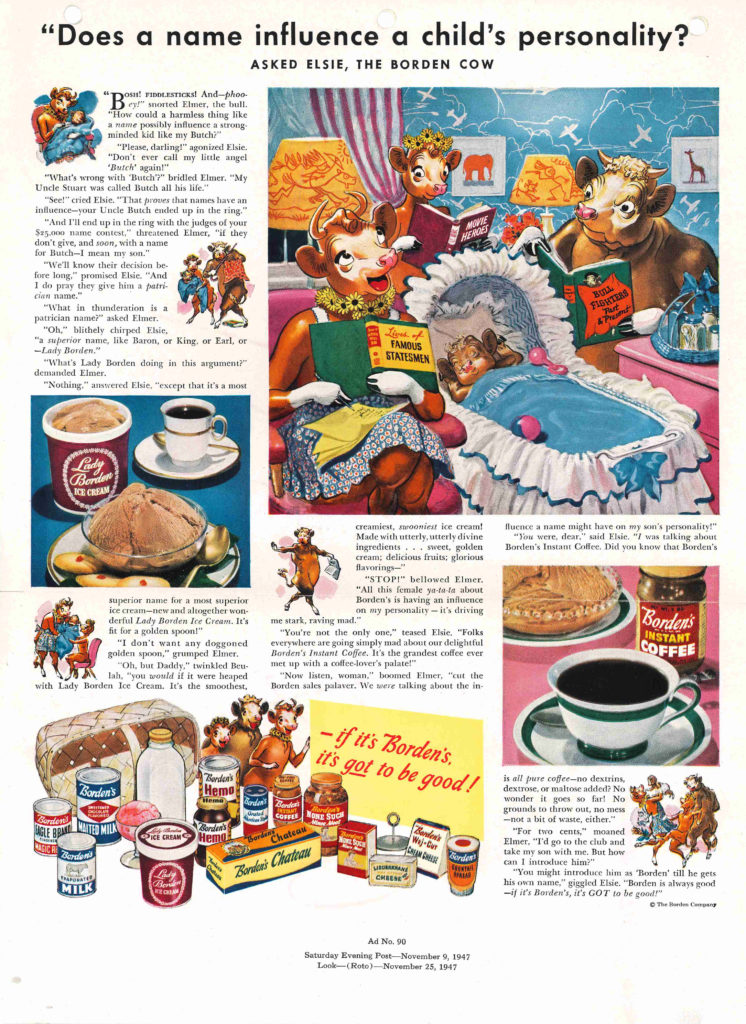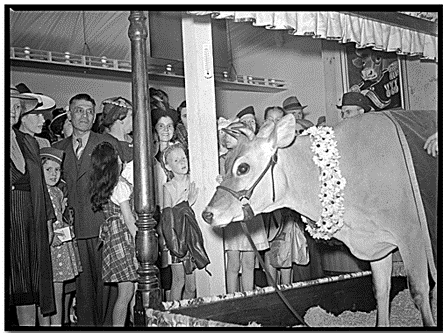In the 1930s, the dairy industry saw publicized price wars between farmers and dairy processors that caused larger dairies to be portrayed unfavorably. The cartoon Elsie was created by Borden’s advertising agency in 1936 to help make the brand more friendly and approachable to the public. The company first started advertising in medical journals, which featured a variety of cartoon cows with several different names, including Mrs. Blossom, Bessie, Clara and Elsie. A typical ad showed a cow and calf talking in a milk barn.
Calf: “Mama, I think I see a germ!”
Cow: “Mercy, child – run quick for the Borden Inspector!”
Doctors loved the ads and inundated the company with requests for reprints to hang in their office waiting rooms. While the medical campaign continued, Borden tested the ads in a few New York newspapers. In 1938, Borden was sponsoring network news commentator Rush Hughes. A radio copywriter who was intrigued by the medical journal ads prepared a commercial that delighted Hughes, so he read it himself on air. It made reference to the following letter:
“Dear Mama: I’m so excited I can hardly chew. We girls are sending our milk to Borden’s now! Love, Elsie.”
The commercial amused Hughes’ listeners, and fan mail began pouring in addressed not to him but to Elsie. Elsie became the spokescow for Borden forever after.

